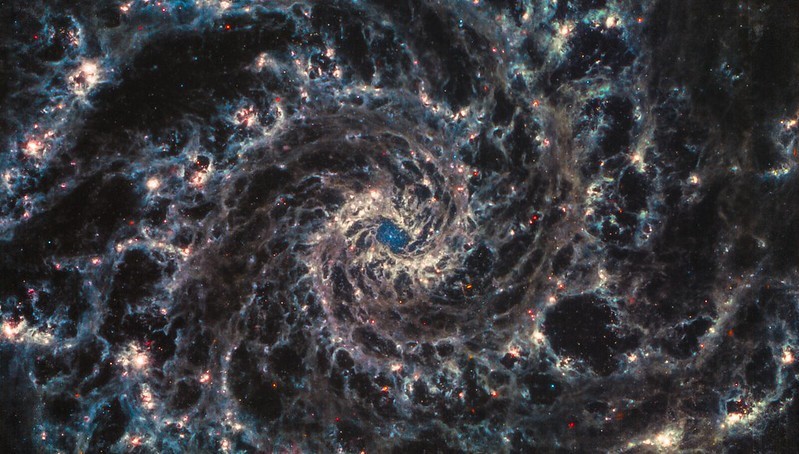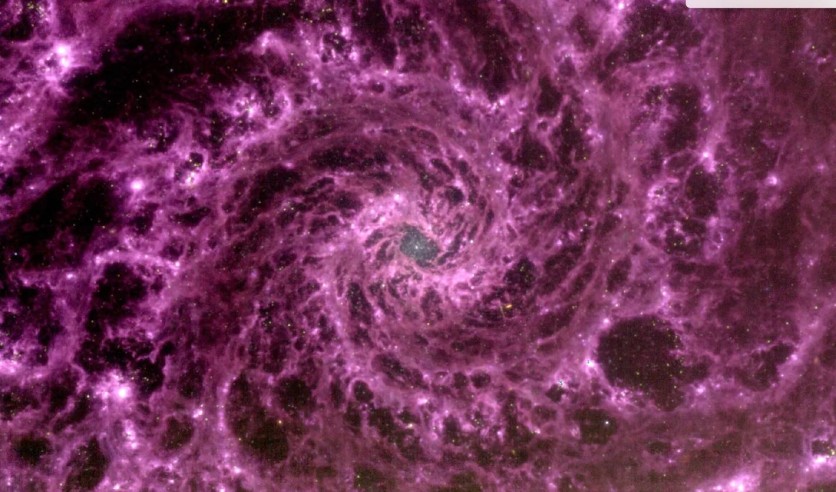The Grand Design Spiral Galaxy, also known as M74 and the Phantom Galaxy, has never looked this eerie, strange, and insanely detailed!
Thanks to NASA's James Webb Space Telescope (JWST) and popular amateur astronomy image processor Judy Schmidt, we are provided with an image of M74 with all its glory and spectacle!

The Phantom Galaxy
As its mission progresses, the JWST is attracting a huge amount of attention. The telescope's Mid-Infrared Instrument (MIRI) recently imaged M74 (NGC 628) and Judy Schmidt worked on the image to unravel its haunting details, reported first by Universe Today.
M74 is a massive spiral galaxy that has an estimated 100 billion stars in its vicinity. Webb's 3D-like pictures provide the appearance of a tunnel through the almost symmetric spiral galaxy's dust lanes and arms.
This is a fantastic illustration of a Grand Design Spiral Galaxy and is located roughly 32 million light-years from Earth. As part of the PHANG Survey, the JWST captured images of this galaxy.
According to their website, PHANG (Physics at High Angular resolution in Neighboring GalaxieS) investigates nearby galaxies in high resolution to figure out how the small-scale physics of gas and star formation interact with the galactic structure and galaxy evolution.
The survey uses several telescopes to analyze galaxies, but since the JWST is in operation, it is significantly advancing the project.
Read Also : NASA's James Webb Space Telescope May Have Captured 'The Oldest Galaxy Ever' - Astrophysicist Says
Grand Design Spiral In Purple
The Barbara Mikulski Archive for Space Telescopes (MAST), which houses data from 16 NASA telescopes, including current missions like the Hubble Space Telescope and Kepler, received the data that Webb had taken on July 17 after sending it back to Earth.

However, it is worth noting that the image's purple swirling arms don't actually have that purple hue, instead, they appear that way because the galaxy's molecule-building blocks emit radiation.
Brammer explains on Twitter that he combined the views from three of MIRI's nine filters to create a new view of the galaxy after downloading processed raw data that had already been gathered by JWST's MIRI.
Even though the Hubble Space Telescope has been wandering the cosmos observing various spiral galaxies, the JWST has the capability to peek into the center of spiral galaxies with an unparalleled level of accuracy. This recent image is only an indication that we have a lot to look forward to.
The JWST is ushering in a "new era in astronomy" and it has only just begun.
Read also: 'Hubble vs James Webb Telescope:' Is NASA Webb's Deepest Image of the Universe Stunningly Clearer?
This article is owned by Tech Times
Written by Joaquin Victor Tacla
ⓒ 2025 TECHTIMES.com All rights reserved. Do not reproduce without permission.




